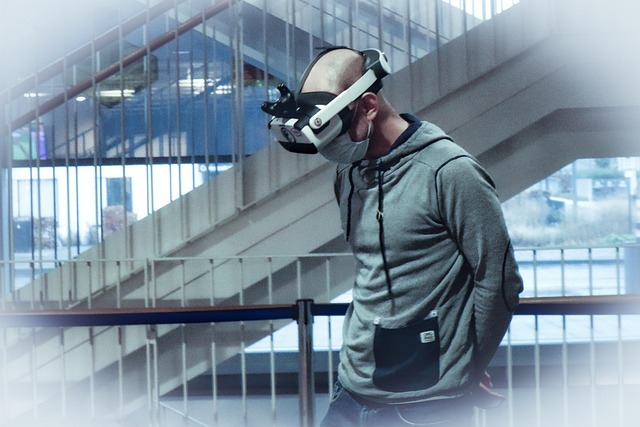Intro: Sound Isn’t Just Background Noise
Visuals may grab headlines, but sound is what makes games breathe. Audio connects the player to the world—not just through explosions and dialogue, but through the feel of movement, the mood of a scene, the pulse of a moment. Turn the volume off, and even the most graphically stunning game falls flat.
Great audio design nails three things: immersion, feedback, and emotion. First, immersion—sounds that make the space feel real. A distant thunderclap. Leaves crunching underfoot. Not flashy, but they pull you in. Then there’s feedback. A sharp reload click tells you your gun is ready. A low beep warns you’ve stepped somewhere you shouldn’t. It’s subtle instruction baked into the experience. Lastly, emotion. A rising score during a chase. The eerie silence before a jump scare. These aren’t just background details—they’re triggers that guide how a player feels.
In modern game design, visuals tell part of the story. Sound fills in every gap they can’t touch.
The Power of a Good Score
Music in games does more than fill silence—it sets the emotional tone. One swell of strings can turn a simple walk through snowy ruins into a moment of quiet awe. A pulsing synth beat can turn a boss fight from stressful to exhilarating. Tension, triumph, loss, discovery—music lights the emotional path without saying a word.
Think of the best-known soundtracks in gaming—Zelda, Final Fantasy, Halo. They stick because they do more than sound good. They’re emotionally bonded to gameplay moments. A theme doesn’t just play—it anchors a memory. That town you first saved? You remember it with the melody looping in your head. That final battle? You still hear the horns.
What’s really evolved is how game music behaves. It’s not fixed anymore. Modern engines allow music to shift in real-time. Explore a dungeon, and the underscore builds quietly. Enter combat, and drums ramp up mid-note. Sneak past a guard? The mix thins. Fight gets intense? The orchestra swells. Good audio doesn’t wait—it reacts.
Dynamic music design isn’t flash—it’s function. It guides player emotion, offers feedback without clutter, and above all, helps a game feel alive.
Sound Design = Player Feedback
In well-designed games, sound does more than fill the silence—it tells you what’s happening before you even see it. Footsteps in the distance? Someone’s close. A subtle reload click behind a wall? Time to flank. Great audio doesn’t hold your hand—it trains your instincts.
The top competitive titles—think Valorant, Apex, or CS:GO—lean hard into sound as a tactical tool. Every cue is engineered: footsteps vary by surface, gunshots echo based on proximity, and abilities have distinct audio footprints. You learn to listen, not just look. That’s not flavor, that’s function.
It’s also the fastest way to deliver feedback without breaking immersion. Health low? You’ll hear it in the heartbeat. Land a critical hit? The impact sound sells it before the animation finishes. In a high-stakes match, players don’t have time to check UI. Responsive, layered audio lets them act on instinct.
Smart sound design is invisible until it’s not there—then you feel lost. When done right, it makes you sharper, faster, and fully locked in.
Building Immersion
Sound doesn’t just support the visual world of a game—it helps construct it. When used with intention, audio elements pull players deeper into virtual environments, enhancing realism, tension, and emotional engagement.
Environmental Audio: Setting the Scene
From the rustle of leaves in an open forest to the buzz of neon signs in a futuristic cityscape, environmental audio details bring game worlds to life. These sounds give scenes authenticity and anchor players in the setting.
- Ambient soundscapes mirror the emotional tone of the environment
- Weather effects like rain or wind can add movement and depth
- Layered audio reflects activity levels—for example, a city sounding busy during the day and empty at night
Well-crafted ambient audio helps players feel the world, not just see it.
Spatial Sound: Hearing in 3D
Spatial audio adds a vital dimension to immersion by simulating three-dimensional hearing. This means players can locate sounds based on subtle directional cues, helping them navigate spaces naturally.
- Footsteps approaching from behind or an enemy lurking to the left guide a player’s awareness
- Accurate sound positioning heightens realism, especially in VR or first-person games
- Technologies like binaural and surround sound create a more convincing soundfield
Spatial sound isn’t just about immersion—it also enhances gameplay precision and reaction time.
The Power of Silence
In a medium packed with stimulus, silence might seem counterintuitive—but it’s often one of a designer’s most powerful tools.
- Pauses in audio can increase tension and anticipation
- Used sparingly, silence highlights emotional beats or moments of suspense
- A sudden drop in ambient noise can signal danger before the player sees it
Smart use of silence teaches players to listen as closely to what’s missing as to what’s present. It’s an emotional and strategic element often overlooked.
In combination, environmental audio, spatial sound, and silence build the soundscape of immersion—each one deepening how players experience the game, moment by moment.
The Psychology of Game Audio
Music in games doesn’t just fill silence—it drives emotional arcs. A shift in tempo can elevate heart rates. A subtle chord change can alter player decisions. Developers understand now that scoring isn’t background work—it’s emotional engineering. Music tells players how to feel, even before they know why. Ever catch yourself holding your breath during a quiet moment in a stealth mission? That’s no accident.
Then there’s adaptive music—tracks that shift based on what the player does. Enter a boss room, and the strings swell. Linger too long in the shadows, and the percussion fades into unease. These reactive soundtracks aren’t flashy features; they’re core systems that link game mechanics with psychology. This isn’t about just playing music—it’s about shaping player behavior in real time.
Nowhere is this more visceral than in horror games. Case in point: in titles like “Amnesia” or “Resident Evil,” the music is often restrained, almost manipulative. Silence does more than sound. Low frequencies cause a creeping sense of dread. In some cases, the absence of music is what heightens attention. When the track drops out, players lean in—tense, alert, and ready to panic. Horror audio doesn’t shout; it whispers threats in the dark.
As soundtracks evolve, they’re becoming less like scores and more like psychological instruments—guided by code, tapping directly into emotion, and reacting to players as they play.
Trends and Tech in Game Audio
Game audio isn’t just evolving—it’s accelerating. AI is starting to play a big role in how music scores react to player actions. Instead of relying on pre-scripted loops, new systems use machine learning to tweak tempo, tone, and layers in real time. The result? Music that shifts with your decisions. Climb a mountain, dodge a bullet, or pause in a quiet cave—your soundtrack moves with you.
Now layer in 3D and binaural audio. These aren’t marketing buzzwords. They pull the sound around and inside your head, giving you a sense of space that stereo just can’t replicate. Hear the rain hit leaves behind you. Know the footsteps are to your left, not just vaguely nearby. If you’ve played with headphones on lately, you’ve felt it.
Adding even more depth, major studios are pulling in real composers and artists to craft scores that carry emotional weight. We’re seeing partnerships with chart-toppers and film composers who know how to build arcs and moments. It’s not just about loops anymore—it’s about narratives in sound.
Together, these trends are changing game soundtracks from passive ambiance into active storytelling tools. Whether you’re sneaking through shadows or sprinting into a boss fight, the music knows what you’re doing—and makes you feel it.
Crossover with Esports and Competitive Gaming
Audio Cues: The Unseen Advantage
In competitive gaming, where every millisecond counts, audio cues can mean the difference between victory and defeat. Pro players rely on sound not just for immersion but for information—enemy footsteps, ability cooldowns, reloads, and ambient triggers become strategic data points.
- Footsteps reveal positioning — Skilled players can distinguish enemy distance and direction purely through sound.
- Weapon reloads signal opportunity — The faint click of a reload can signal a moment to engage.
- Environmental sounds give away movement — Doors creaking, glass breaking, or rustling bushes are all cues to act.
Competitive titles like Counter-Strike: Global Offensive or Valorant are built around highly tuned sound systems that reward players who listen as much as they look.
Prepping the Pros: Audio as Training Ground
Esports athletes often undergo audio-specific training sessions to hone their auditory reaction time.
- Sound-isolated drills help sharpen focus and reaction to subtle cues.
- Custom settings are fine-tuned for maximum clarity and minimal distraction.
- Coaches integrate audio feedback into performance reviews, pointing out missed cues or sound advantages.
In high-stakes matches, players depend on consistent and reliable audio output, not just high frame rates.
Want more on this? Check out Esports Explained: Transition from Casual to Pro Gaming
Final Takeaway
Audio isn’t an afterthought—it’s the emotional scaffolding of a great game. The rumble of a distant storm, the low hum before a boss battle, even the quiet between moments—all of it matters. When developers treat audio with the same care they give to visuals or mechanics, the entire experience levels up.
Players might not always call it out, but they feel it when the sound design is dialed in. It’s the reason a stealth mission triggers real tension, or why a puzzle click feels satisfying. Games aren’t just seen and played. They’re heard.
If there’s one thing to take into your next project, it’s this: great sound embeds players in the world you’ve built. And in a crowded market, immersion is what keeps them coming back.




